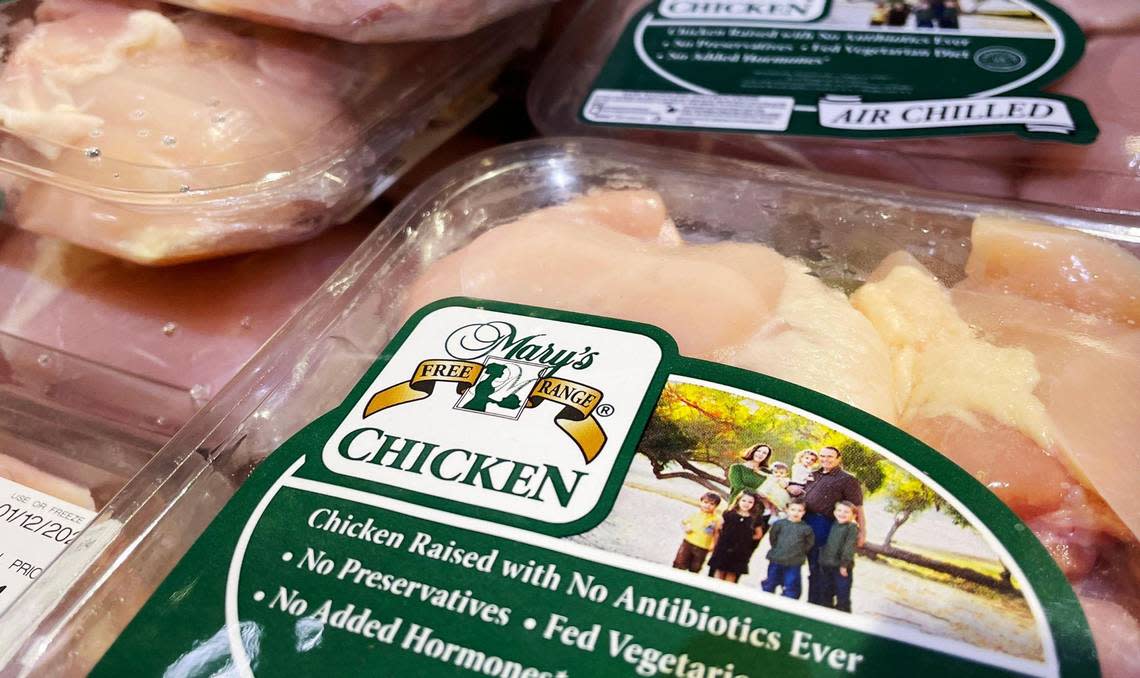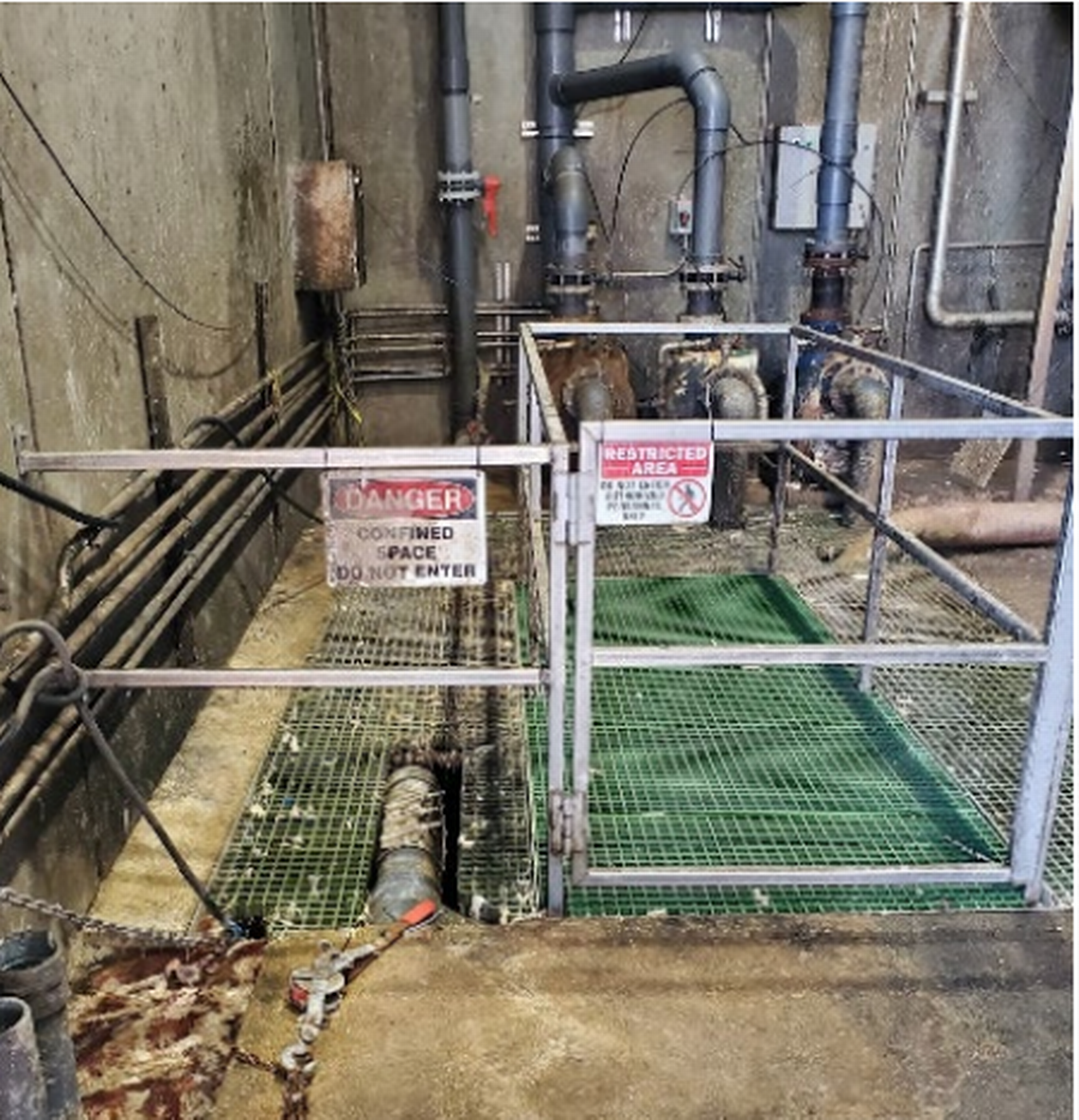How did Mary’s Chicken poultry worker drown in waste pit? Report reveals ‘infuriating’ details
In the Spotlight is a Fresno Bee series that digs into the high-profile local issues that readers care most about. Story idea? Email tips@fresnobee.com.
The gruesome death of a Mexican immigrant at a Central Valley poultry plant last year could have been caused by toxic fumes emanating from a pool of chicken waste water that incapacitated the worker before he fell in and drowned, according to new details in a state report.
The death of 66-year-old Jesus Salazar Castillo at Pitman Family Farms could have been prevented with training, protective gear and better protocols for working around hazardous gas, state officials said in a special investigative report. The family-owned company is known for its humanely-raised poultry sold under the high-end ‘Mary’s Chicken,’ ‘Mary’s Turkey’ and ‘Mary’s Duck’ brands.
The special investigative report concludes that missing floor coverings and damaged railing around the wastewater pit, as well as the lack of safety plans or monitoring of toxic wastewater, contributed to Salazar’s death.
Though the investigation doesn’t mention the employer by name, details of the fatality in the report match the day, time, age of the victim, and nature of Salazar’s death, as documented in other state and police records. The July Fatality Assessment & Control Evaluation report is a type of investigation conducted by the California Department of Public Health’s Occupational Health Branch reserved high priority workplace deaths.
Pitman Family Farms did not respond to a request for comment. Company executives have declined requests for interview and comment in the past for previous Bee stories about worker safety at Pitman facilities.

Poultry processing is considered a hazardous industry by federal occupational health and safety regulators, but Pitman’s safety record includes multiple worker deaths and a higher than average rate of injury compared to other similarly sized poultry plants nationwide, according to a 9-month Fresno Bee investigation into working conditions at the company.
The Bee’s February investigation prompted by Salazar’s death in May 2023, found the company has engaged in unsafe business practices, with at least four worker deaths in the past eight years during the course of various operations involving the company’s Central California ranches, grain mill, processing facility and poultry transportation fleet.
On the morning of his death, Salazar was assigned to clean the area around a waste pit at Pitman Family Farms poultry processing plant in Sanger — a 14-foot-wide, 8-foot-long and 17-foot-deep rectangular structure containing a mixture of chicken feathers, remains, waste, fat and water.
The water pumps which carry wastewater were turned off that morning to prevent overflow, the report said. The waste in the pit’s stagnant water likely led to dangerous levels of hydrogen sulfide, which is a flammable, highly hazardous gas common in meatpacking plants and in sewage operations including wastewater treatment.
Though the hydrogen sulfide levels weren’t measured or monitored by the company at the time of Salazar’s death, the state report said the gas was likely present in the pit.
“At high concentration,” the report said, “it may result in death within minutes.”
Investigators wrote that Salazar “may have been kneeling close to the surface of the offal pit where he was exposed to concentrations of H2S (hydrogen sulfide) that resulted in the rapid loss of consciousness that caused him to fall in the pit.” (Offal refers to to the waste or byproduct of butchered or processed animal meats.)
The report also shows that Pitman Farms made upgrades to the waste pit area following Salazar’s death.
“If the pit had been guarded on all open sides and a hinged floor hole cover was used,” the report said, “it may have been less likely the victim would have fallen into the pit and died.”
La Abeja, a newsletter written for and by California Latinos
Sign up here to receive our weekly newsletter centered around Latino issues in California.
According to the Fresno County Coroner’s office, Salazar’s cause of death was drowning. But it’s not immediately clear how Salazar ended up in the waste pit because there were no direct witnesses to the incident or camera footage inside the waste pit room.
The report said the company failed to develop proper safety protocols related to hydrogen sulfide. There were also missing and unsecured floor grates protecting the offal pit, as well as damaged guardrails, the report said, echoing findings from Cal/OSHA inspections and a Sanger Police Department report obtained by The Bee.
“The employer did not have any policies or procedures to perform work in the offal wastewater pit room,” the report said.
Originally from Michoacán, México, Salazar worked at Pitman Family Farms for about two years before his death. According to his company badge, he was a turkey line worker, though the FACE report said he regularly took on extra weekend shifts to help with maintenance in the pit room, where he died.
Salazar’s grieving family is shocked, heartbroken and angry about the new details on his death.
“The previous information we received from Pitman Farms lacked the depth and important factors that we believe contributed to my father’s death. After reviewing the new report, we are filled with sadness, as it seems his death was not merely an accident, but rather a result of neglect. We genuinely feel this tragedy could have been prevented,” said Salazar’s daughter-in-law Lina Castillo.
According to CDPH, FACE investigators do not enforce state or federal job safety and health standards regulations or determine fault. “Our investigations consider all factors and do not focus on ‘who was to blame,” the agency’s website said.
In November, Cal/OSHA’s cited Pitman with four “serious” violations and $56,250 related to Salazar’s death; the company is contesting the penalties.
Castillo said her family initially believed the company valued Salazar’s hard work and well-being. In light of the report, she now says they believe the company values profits over the lives of its workers.
“It feels incredibly unjust and infuriating,” she said.
Multiple dangerous operations at California poultry business
Salazar’s was one of two deaths at the poultry plant in less than a year.
On Feb. 21, 19-year-old Jose Abrego died when he was crushed by a semi-truck in what police responding to the scene described as poorly lit working conditions with little safety precautions. Abrego had been cleaning poultry debris from the truck bed, when a coworker assigned to move the truck for loading and unloading purposes struck and killed Abrego, according to a Cal/OSHA inspection and police report. One occupational safety expert said his death was “totally preventable.”
Two trucking experts calculated that according to the most recent available data, the Pitman-affiliated poultry transportation fleet, Western Grain and Milling, had an estimated accident rate around four times higher than industry standard, indicating poor safety and risk management programs. Safety regulators cited the trucking company with 242 mechanical, safety and other related violations in the past two years.
The most recent CA/FACE report on Salazar’s death is not the first time a government agency has found Pitman Farms to have unsafe practices around a hazardous substance.
Around two dozen workers were hospitalized between 2014 and 2016 following three toxic ammonia leaks at the processing plant. Ammonia is one of the top three chemicals that causes worker injuries and meatpackers often use large amounts of ammonia in their refrigeration system.
According to a settlement agreement with the U.S. Environmental Protection Agency, the company didn’t have an emergency response program in place as required by law at the time of the first leak. The EPA also said there were no records that employees received or understood training related to the process.
What’s new in state report on Pitman worker death
The investigation into the drowning was conducted in September 2023 after CDPH FACE investigators received a referral from the California Department of Industrial Relations on May 9, days after Salazar’s death.
Fatality Assessment and Control Evaluation (FACE) Program Report 23CA002 by Melissa Montalvo on Scribd
At the national level, FACE investigations are conducted by the Center for Disease Control’s National Institute for Occupational Safety and Health, though some states, including California, can conduct their own investigations.
NIOSH does not comment on state FACE reports, said an agency spokesperson. But in general, “in-depth field investigations are conducted for selected cases in priority categories of fatal injuries.”
The federal agency prioritizes robot-related fatalities, tree care/arborist, powered industrial trucks/warehousing, tow truck drivers, and waste collection/sanitation, as well as other issues such as confined spaces, electrocutions, logging, deaths of Hispanic workers and youth worker deaths. State FACE programs can have additional priorities. “Priorities are determined according to national and state priorities and are periodically reviewed and revised,” a NIOSH spokesperson said.
In CA, FACE reports also focus on worker drownings, palm trimming, solar installation and other wood chippers, firefighting, construction falls and Methalyne Chloride exposure, according to the CDPH website.
“This report was produced to warn workers of the potential hazard working in a poultry processing facility,” said a spokesperson for CDPH in an email statement. “FACE reports and other educational materials can provide valuable lessons to prevent other tragic workplace deaths, and are shared with workers, employers, and the public.”
The state report made several recommendations to prevent similar deaths, including:
To develop and implement policies, procedures and inspections to prevent workers from being overexposed to hydrogen sulfide
Ensure pit area is identified as a permit required confined space
Maintain pumps and equipment in pit room are in operation so there is wastewater flow
Ensure offal pits are guarded and covered







